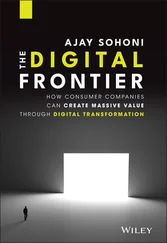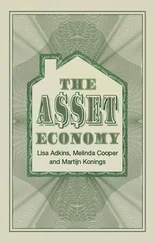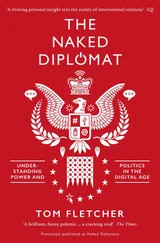To fully grasp the significance of this use of the World Wide Web we need to remember that what Google were (and are) reading through PageRank is a collectively created store of information to which anyone with access to the internet can add on topics of their choosing, including linking as website creators feel is appropriate. The WWW is created by following a set of formal standards that define how you have to form information and load it on a networked computer for it to be visible to other sites (as will be discussed further in Chapter 5). Once a website is visible other sites can link to that site just as anyone can link to their sites. The standards were released to be freely available and are maintained by a not-for-profit consortium. Much of the content that was created was done so freely by ordinary users with internet access and computing resources, though over time corporate and government sites run by paid employees have played a greater role. The WWW is then a collective creation formed of a series of groups that link to each other because they choose to do so in order to ensure that relevant information is connected and available. Although it was heavily commercialised once it became popular, the WWW preceded the birth of Google, and remains a space in which groups of people with similar interests can generate and share information resources (Berners-Lee 2000; Gillies and Cailliau 2000).
PageRank was a means of reading these linked groups and their social relations. Once PageRank had read, for example, sites devoted to surfing it had evidence of the most important sites based on those who loved surfing and had created sites on the subject, including what those people thought were the most important sites and topics. This was the key work done in the initial Google search engine which can be drawn on when someone makes a surf-related search query. In this sense, any search query comes last in the practices of answering it, after the work has been done to read the relevant topics represented on the WWW.
The PageRank algorithm did not, however, last long in its original form. As Google gained a reputation as a good search engine and traffic to it began to increase, it became possible to raise a site up the search rankings by adding fake links to it. Large farms of sites which did nothing but try to game Google’s rankings by faking links appeared in the first rounds of the then emerging and now never-ending struggle between Google’s attempts to deliver the search results it deems best and the attempts of individual sites to ensure they are returned as high as possible in the results. As one information expert in search put it: ‘there’s definitely a kind of, ah, a kind of a war going on between the search engine and the marketers, marketers are pressuring the search engines to be more crafty, more authentic in how they rank’ (cited in Mager 2012: 777). Google then has to commit considerable labour to constantly monitoring and then upgrading its search mechanisms, which then feeds through to changes in advertising. This leads to the second set of practices necessary to understand Google search, which involves the elaboration of the original algorithm with more algorithms (Hillis et al. 2012).
One of the best-known early additions to PageRank was the Random Surfer Model, which injected, as its name implies, randomness by assuming that at certain points anyone following web links would randomly jump to some other link. Further improvements were made, some in response to attempts to game the system and others to improve search results. For example, the Hilltop algorithm aims to divide the Web up into thematic sections and then judge if a site has links to it from experts who are not connected to that site. If many independent experts link to the site, then it is deemed an authority in its thematic area and can be used to judge the importance of other sites. Hilltop thus builds on citation practices while developing them in a specific direction. This algorithm was initially developed independently of Google and was bought by them to be integrated into its own set of tools. There are no doubt many other adjustments and wholly new algorithms integrated into PageRank and because of trade secrecy there will be more than we know about. But these examples are enough to establish the basic principle that, however it is implemented, Google’s successful search – successful both in terms of delivering useful results and in terms of popularity – derives from reading the creations of the pre-existing community of the World Wide Web (Turrow 2011: 64–8; Vaidhyanathan 2012: 60–4; Hillis et al. 2012).
The second key area of search development was opened up by Google only after the first algorithms for reading the WWW proved successful. This second area was that of personalisation, which only became possible once Google became big enough to start collecting significant datasets on those using its search engine. Exploring these datasets enabled the targeting of search results, with different users receiving different search results. This is particularly the case if the searcher uses other Google services, such as Gmail, and has a Google account. Personalisation appears to many to be the process whereby Google judges whether a searcher who uses a term like ‘surf’ is interested in surfing on water, musical channels, or the Web and so on. It also seems to identify users individually, each having a certain age, location, gender, race and so on, bringing users the results that are judged appropriate to their demographics. However, reading personalisation in this way is to read it from the point of view of the user’s practices rather than Google’s. For the latter, the key is not so much each individual but the correlations between many individuals; it is the inter-relations that are key to producing a useful result for an individual, not the other way around. This is because the inference has to be constantly made that if many individuals of a certain type favour a particular search result then this can be delivered to individuals who fit that type. It is these kinds of mass correlations that allow for the targeting of particular groups of people – assuming, for example, that men of a particular age group might prefer the Burt Reynolds version of the film The Longest Yard , whereas those from a younger age group might be looking for the Adam Sandler remake with the same name, and those of a different nationality may be interested in the Vinnie Jones-led soccer version called The Mean Machine (Feuz et al. 2011; Hillis et al. 2012).
Personalisation achieved by building correlations between categories, or profiling as it is sometimes known, is a second way to mine social relations to create Google search (Elmer 2004). The results delivered to individuals are partially based on correlations which are meant to mathematically capture what social and cultural life means. This is not a totalising analysis which posits one set of internally consistent social dynamics, but a tracing or mapping of whatever social relations can be found from analysing the data Google collects. In this way, Google’s practices of delivering search results and generating data on which ads can be based include various ways algorithms can read the relations between people.
Starting with the social relations that can be read from the structure of the WWW, Google search then progresses through various means of manipulating and extending that reading. Once enough data has been collected, it can progress to reading the kinds of correlations that measure social relations, which may then be used to personalise search results. Google search practices intertwine different kinds of people, algorithms, datasets and constant updating and storing processes to deliver an answer to a question. These algorithmic logics, that are interweaving different kinds of actors in people, software, data, hardware and so on, must continue to deliver a successful search engine, but they must also conform to the corporate logics Google has embraced as a for-profit company.
Читать дальше












